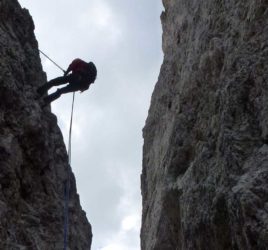Evolution of a Martial Art
When I started training in martial arts several decades back, the styles I studied were very two-dimensional. In other words, they were written down – sometimes with photos or illustrations – but there was nothing alive about them. They were a cataloged series of techniques/kata/movements that existed for me much the same way they had existed since the art began many years ago. It was passed down, ostensibly by teacher to student who would progress to become a teacher with his own students, pretty much as it had been for generations previously. Even today, there are certain koryu bujutsu enthusiasts who believe that techniques must be preserved and passed on exactly as they were for hundreds of years. They are exacting – to the point of being incredibly anal retentive – about what they do. But most of them are also honest: they don’t pretend to be able to use their art in combat. For them, it’s more of a recreation, much the same as those who dress up in military uniforms from the Civil War to reenact battles would be.
For a combat martial art like Ninjutsu, however, this approach is wrong; it robs the art of its life. There’s no sense of vitality to it. Combat cannot be reduced to two-dimensional snippets. It is an ever-changing, ever-evolving situation and the art needs to be that way as well.
As a beginning student, we walk into a new school filled with wonder, apprehension, and the proverbial empty cup. As years pass, we grow comfortable with the tradition, its mechanics, and the training partners we sometimes come to call friends. Eventually, our own evolution in the art produces a certain degree of skill within us and we may be inclined to become teachers. Sometimes, this happens when the student is ready to take on the mantle of teaching and the incredible responsibility that position entails.
The best teachers are those who continue to view themselves as students, always looking to add to their pool of knowledge and experience. They are forever looking further down their own path to the information they can incorporate into their own evolution. They study constantly, subjecting the techniques to the constant fire of real life, for it is only in this crucible that true experiences worthy of being handed down to a new generation of students are gathered. This is the legacy of this martial art. It is the reason why the art continues to evolve instead of being confined to the two-dimensional status of other arts.
But sometimes, becoming a teacher happens much, much sooner than it should. The reasons can be many: rabid insecurity and a lack of success in other areas of life may cause one to seek the position, a student may be graded at a higher rank as a test by their teacher to see if they allow their ego to trip them up, a desire for fame, status, or money, the need to be seen as some type of expert, etc. etc. etc.
Inevitably, what happens to those who should not teach – but do – is that they end up killing the art they may once have loved. They stop learning; they stop evolving. Worse, their inability to pass on even basic fundamentals to students can end up causing those students to get hurt or potentially die because of the teacher’s lack of experience. Those who teach but should not have a tendency to view themselves as masters of material that is far greater in depth and volume than most of us – truthfully, pretty much all of us – have the capacity to learn to the degree that we can pull it out and use it when we need to. There is simply too much to learn.
Yet the best teachers always try.
Those who teach but should not don’t try to learn this material as if they were still that beginning student filled with wonder. They try to assimilate the material only enough so they have something new to show their students. But they know deep down that they don’t understand it, so they explain that lack of ability away by casually lumping in this new information with the old. “This is just like that kata” or “this is just like that movement we did six years back.”
Only it’s not.
The best teachers don’t allow themselves to get trapped by the position of teaching. In other words, when it’s time to teach, they teach from their experience of working with the material they have learned and tried to master as students; they teach having used this stuff in the real world, knowing the emotional flux that happens, the uncertainty of facing a real threat, and the confidence they have gained from emerging safely on the other side of the conflict. But when they’re done teaching, they go back to being that student all over again. The cycle repeats. And as their experiences mount, their students are richer for it. This natural cycle becomes the basis of why this art continues to evolve.
Those who teach but should not, on the other hand, find themselves trapped by the status they sought so fervently. The need to always be seen as someone who is an expert, or the desire for others to gaze upon them with wonder, or the need to change their own personal history to try to be a part of something they never were, is fueled by insecurity and inability to stop the downward spiral they’re trapped on. The result is a further diminishing of skill in that would-be teacher, in the skills of those they would teach, and in the art itself. One only need go to Youtube and enter “Bujinkan” to see ready examples of why this art suffers from a tragically horrid reputation within the martial arts world. Too many people want/need/must be teachers without having the time, skill, or personal integrity to be one.
Those who teach, but should not, are forever scrambling to find new material to teach their students, lest they lose their students. As they scramble, the veil of ineptitude slips inevitably away, exposing the lack of skill. The students leave anyway.
But the best teachers have an inexhaustible supply of material to teach based on the fact they are always having new experiences from which to draw. As they evolve, so too do their students. So, too, does the art.
So while there exist far too many teachers who should not teach but do, there are also those who teach and should. For this amazing art, that is a good thing. It means the art will continue to live and evolve as it should, to always address the needs of the newest generation of warriors.
While those who teach but should not will inevitably end up blowing away like the very same two-dimension pages they draw their limited scope of knowledge from.
And the evolution continues.



